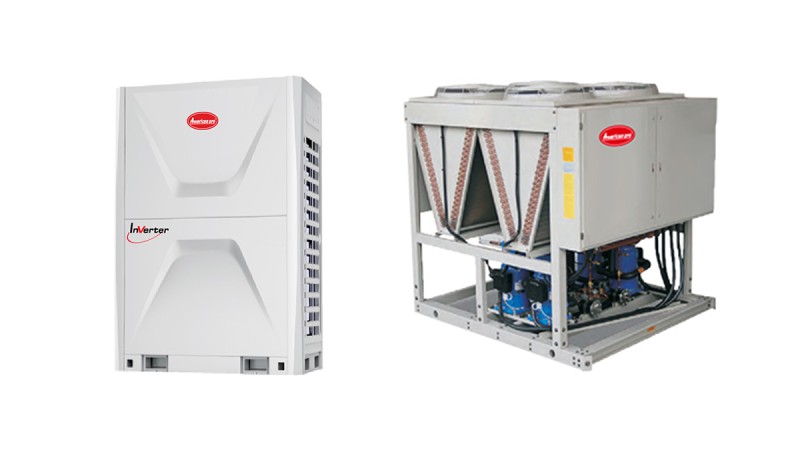What Is The Difference Between VRF & Chiller
1. The Working Principle of a VRF System A variable refrigerant flow (VRF) system is a kind of air conditioning system that employs the utilization of refrigerant as the medium for the transmission of heat. An outdoor component is connected to a number of different inside components through this system. The flow of the refrigerant may be adjusted to accommodate the cooling or heating requirements of various zones or rooms on an individual basis.
- A Chiller System is a Centralized Cooling System That employs Chilled Water As The Heat Transfer Medium A chiller system is a centralized cooling system that employs chilled water as the heat transfer medium. To remove heat from a number of different zones or rooms, it does this by recirculating cold water via cooling coils. After that, the water that has been chilled is transferred back into the chiller so that it may be re-cooled and reused.
2. System Configuration: - VRF System: The outdoor unit of a VRF system has a compressor and refrigerant valves that regulate the flow of refrigerant to the indoor units. This configuration is known as a variable refrigerant flow (VRF) system. The indoor units, which are commonly fan coil units, are located in each zone or room and may either cool or heat the space according on the needs of the occupants. Each indoor unit is capable of being regulated independently, which enables temperature regulation on a zonal level.
- Chiller System: A chiller system will normally consist of a chiller unit, which will include components such as a compressor, condenser, evaporator, and controls. The water is cooled by the chiller unit, and then it is pumped via a system of pipelines and cooled by coils located in each of the several zones or rooms. The cooling coils remove heat from the air in each zone, and the water that has been warmed by this process is sent back to the chiller to be re-cooled.
3. Capacity and Scalability: - VRF System: VRF systems are typically ideal for small to medium-sized applications with a limited number of indoor units. VRF systems may be scaled up to accommodate an increasing number of indoor units. They provide individual control and are able to effectively manage loads of varied sizes. It is possible to extend VRF systems by connecting additional indoor units to the one outdoor unit that is already there.
- Chiller System: Chiller systems are often used in bigger buildings or facilities that have a need for centralized cooling. They have a great cooling capacity and are able to deal with significant loads. Multiple chillers may be integrated into a single chiller system to provide redundancy and increase the system's capacity.
4. Energy Efficiency: - VRF System: VRF systems are well-known for their energy efficiency because of their capacity to control the flow of refrigerant and meet the cooling or heating demand of each zone. When compared to systems that function at a constant capacity, this leads in a decrease in the amount of energy that is used.
- Chiller System: Chiller systems may also be energy-efficient, particularly if they are outfitted with variable speed drives (VSD), which enable the chiller to alter its capacity dependent on the load. On the other hand, in terms of the control of each particular zone, they may not be as effective as VRF systems.
In conclusion, VRF systems are better suited for smaller applications that need individual zone management, while chiller systems are better suited for bigger buildings or facilities that require centralized cooling. Both types of systems have their advantages and disadvantages. The decision between installing a VRF system versus a chiller system is determined by a number of criteria, including the size of the application, the needs for the different zones, the desired level of energy efficiency, and the initial cost concerns.


